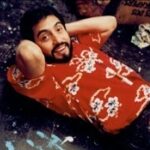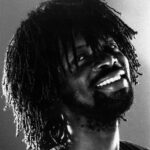This summer Visual AIDS had the pleasure of working with Colin Marston, an intern from The New School. Below, Colin shares his thoughts on the Visual AIDS Artist Registry, and what the registry means to him.
Origins are always a difficult conversation to have. To look into what we have constructed as history, to attempt to pin-point a place in time with "X", to contextualize our living within the living of others known and unknown, is a project of hardship, angst, and questioning.
It is a yearning for origins that led me to my work at Visual AIDS over the past few months. Visual AIDS is an arts non-profit that seeks to support and empower artists with HIV/AIDS. Their mission hinges upon two very important tasks: recognizing the important worth of looking at AIDS in a historical context, and realizing that AIDS is an ongoing reality in the lives of 35 million infected worldwide, 1 million infected in the United States, and the multiplicity of effects the disease has on hundreds of millions of others.
A project that bridges these two different missions is their Artist Registry, a database and archive of artists both who died within the epidemic and artists currently living with HIV/AIDS. It shows their work, provides a space to commemorate, mourn, revitalize, and take into consideration how enormously AIDS effects creative communities, contemporary art, and visionaries since the first diagnosis.
I’ve always wondered how to position myself into this history, being queer, living in New York, and coming to terms with the specificity of the plague in my community, in this geography, and the complex unfolding that has resulted into the current situation today.
When I came into the office around May, the registry already had hundreds of artists and was continually being added to. Yet the organization didn’t have the capacity to focus much attention on the long-term work of updating the archive, and so I was positioned to help make the registry more comprehensive; to represent more voices and narratives, open up the registry to other parts of the world, and to truly fulfill the mission of carving out a space for the preservation and memory of artists who lived with and are living with AIDS.
This objective and subsequent weeks of investigation, research, and data compilation led me to wrestle with large questions of archiving, collective memory, and preservation.
I felt overwhelmed with the task at hand. The historical loss seemed insurmountable. In what meaningful way could I assist in the process of making a place of memory such as the archive more comprehensive, when we live in a society of forgetfulness, a period of the historicizing of AIDS, and of survivors growing older?
I came to view the registry not in the language of comprehensiveness, for that is a project doomed to fail. History floods the consciousness with what has in the past occurred, and to document and enumerate is not a task of totality, but of intention. This is what the registry represents to me, a project of intention. Instead of hurriedly sifting through hundreds of names that have no emotional resonance with me, I would peer into another’s life, investigate their art practice’s, and create a space for them on the registry to be secure in the eyes of those looking for them, inadvertently or not.
The registry is organized in a rather unusual way. The only categories that organize the artists within it are by subjects, medium, and demographic. The conceptualizations of art history freeze in the process with motifs and themes running wild in variety and diversity.
For instance in my investigations, I stumbled upon the painter Carlos Almaraz, a Chicano activist who made landscapes of Los Angeles and sought interactions between lost cultures and technology within the context of the Americas. Juxtapose this with the work of Fani-Kayode Rotimi, a Nigerian photographer, who made gorgeous portraits exploring gay male sexuality and the drift of being between many cultures, between traditionalism and modernity. These artists were working at around the same time, in completely different cultures, frameworks, paradigms, and yet they share the same space in the registry because of their status, of the work that was influenced by their status, their lives that are a part of an immense saga, of a terrible suffering, of a redemptive uplift that changed the way and continues to change the way we think about epidemiology, healthcare, social movements, contemporary art, global inequality, and most fundamentally notions of compassion and caring.
This work of the registry, of combing the past and archiving the present, creates the consciousness to build community and perseverance around the specter of HIV/AIDS. While the loss to creative communities due to AIDS is unquantifiable, unreachable, a deep chasm -- the registry begins to take the pieces and tatters that hover somewhere in the recesses of our collective memory, and stitch them together again. To really understand how this disease impacts so many of us, and create a space not only of memorial but of active participation.
World-making is a contentious process. To sit back and view exhibitions -- like AIDS in New York: The First Five Years at the New York Historical Society, suggesting the Koch administration or the National Institutes of Health looked at the genesis of AIDS and said we did everything we could – needs to be resisted. To push back against dominant narratives and emphasize the stories and knowingness of lived experience within the HIV/AIDS community is of the utmost importance. And so the registry works as a sort of weapon against whitewashing, collective amnesia, the stories elites tell themselves so that their evening is one of rest.
We need spaces where we can be reaffirmed that our differentness, our queerness, our art-making isn’t in a vacuum: here are my predecessors, and I am reminded of the hardships, the joys, and the changes that have happened along the way.
That’s why the act of remembering is vital; it shapes everyday living. Working with this breathing archive day in and day out has shaped my life in untold ways, ways that are subtle in their profundity, mesmerizing in their beauty. The registry makes the artwork living, their creators still sharing a piece of themselves with us, a tool of utmost intimacy. A bridge underneath time, distance, and neglect, I can construct meaning with those that came before me, be in the presence of their creations, and figure out calibrations onto where it is we shall go from here.
Colin Marston is a literature student at the New School. He worked at Visual AIDS during the summer of 2014 through the support of Eugene Lang College's Civic Engagement and Social Justice Student Fellowship. A poet, amateur archivist, denizen of Brooklyn, and lover of backpacking.


